|
-
11th April 17, 12:40 PM
#11
Peter,
Regarding that Red/Yellow Sett in the early Black Watch images, there are like 3 sets of images, multiple artists that show that. I almost wonder if perhaps they really did have a tartan like that?
There is of course, the Mutineer Images, this one of Farquar Shaw
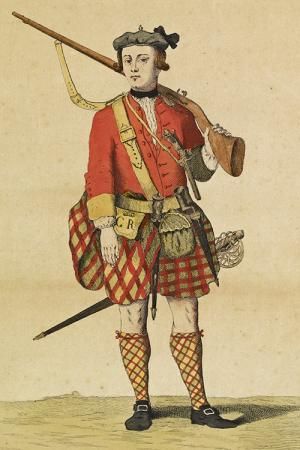
But then there are these images from the Continent, that also show Red/Yellow
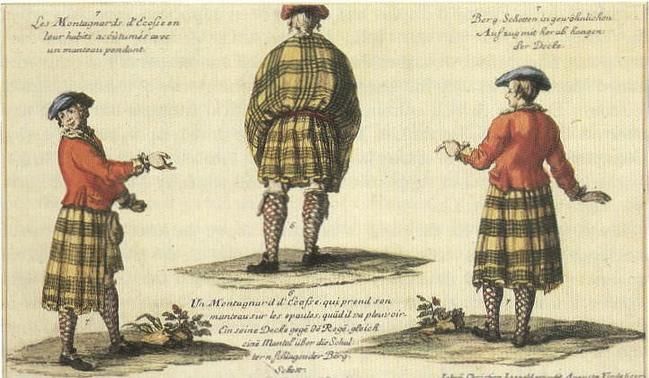
Another watercolor, from the ASK Brown Collection, hard to tell if its red yellow or something akin to Blackwatch:
The hose are certainly red/yellow
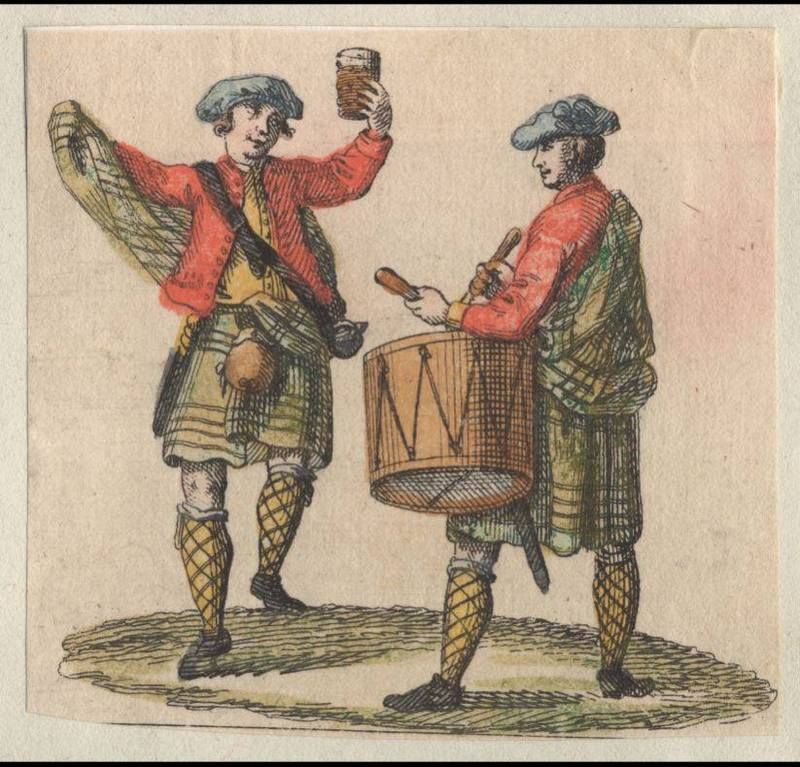
Then there is this oil, "Fashionable people thronging St James's Park", c.1745 Attributed to Joseph Nickolls
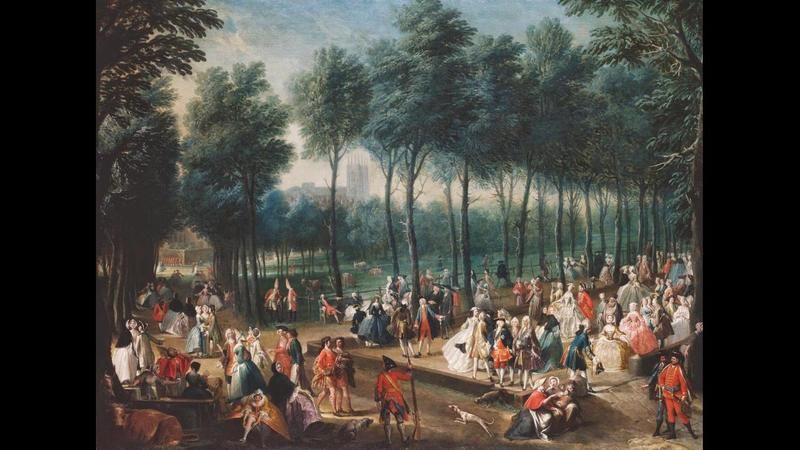
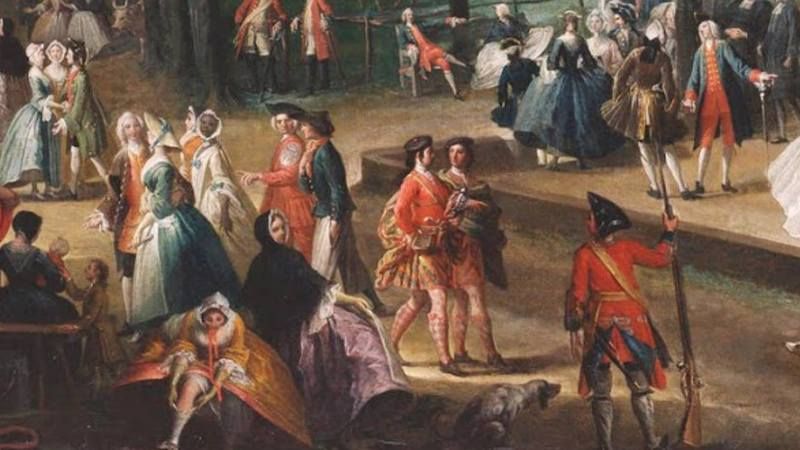
With woodcuts and watercolors there is always artistic licence or disconnect between the engraver and the person who colorized it, but sure does seem like a lot of "Artistic Licence" in the same vein in all these 45/46 era images. I have no idea if either of the 2 Col's prior to Murray have papers that survive that might shed some light on this.
-
-
12th April 17, 08:12 AM
#12
 Originally Posted by figheadair

Clearly kilts with no pleats is a contradiction but a feileadh beag with folds would be closer to what Sandby showed.
The tartan on the bias is obviously nonesense and reflects the difficulty a number of 18th century artists had with depicting tartan. The drawings of the Black Watch mutineers are a good example and their yellow and red tartan bears no resemblance to the Government sett. It may have been the case that th colouring was done later in the same way that it was for the later McIan prints.
What seems less understandable is why Sandby would have shown a feileadh beag and a sparate rolled plaid (much like the army campaign blanket worn by non-Highland soldiers) if the individuals had been wearing a feileadh mor. The style of dress he showed was certainly in use at the time of the '45 as for example, the images from Loevestein Castle attest.
Something else I just noticed is that both the prisoners are shown wearing their plaids over their right shoulders. Unless they both happened to be left-handed (very slim odds of that), wouldn't it have been customary to drape the plaid over their non-dominant (left) shoulders? This detail, while perhaps insignificant, still leads me to wonder about Sandby's accuracy. It would seem obvious that these men were not posing for a portrait, and that he had to paint it from memory of a glimpse in time. But if he got these numerous details wrong about kilts and tartans, one wonders how much "artistic license" he chose to use. It is always tempting to treat historical paintings in the same manner as modern photographs, as if they were accurate down to small details, but I tend to think that these artists were injecting a lot of non-factual information into their works.
Last edited by Tobus; 12th April 17 at 08:14 AM.
-
The Following 2 Users say 'Aye' to Tobus For This Useful Post:
-
12th April 17, 12:51 PM
#13
Tobus.
Even with photographs, assumptions are not always wise either.
" Rules are for the guidance of wise men and the adherence of idle minds and minor tyrants". Field Marshal Lord Slim.
-
The Following User Says 'Aye' to Jock Scot For This Useful Post:
-
12th April 17, 03:34 PM
#14
 Originally Posted by Tobus

Something else I just noticed is that both the prisoners are shown wearing their plaids over their right shoulders. Unless they both happened to be left-handed (very slim odds of that), wouldn't it have been customary to drape the plaid over their non-dominant (left) shoulders? This detail, while perhaps insignificant, still leads me to wonder about Sandby's accuracy. It would seem obvious that these men were not posing for a portrait, and that he had to paint it from memory of a glimpse in time. But if he got these numerous details wrong about kilts and tartans, one wonders how much "artistic license" he chose to use. It is always tempting to treat historical paintings in the same manner as modern photographs, as if they were accurate down to small details, but I tend to think that these artists were injecting a lot of non-factual information into their works.
There are a number of 18th Century images, including at least one other that I posted that show the plaid being worn on the right shoulder. I think at this time, it was not so fixed as to what shoulder a person would use. There is at least one Scottish upper body jacket/sleeved waistcoat that has loops on both shoulders. I cant call the loops epaulettets, as they are on not on the summit of the shoulder, but rather on the back slope,. Epaulettes used to secure swordbelt and cartridge box straps are always on the summit.
-
-
12th April 17, 09:23 PM
#15
 Originally Posted by Luke MacGillie

There are a number of 18th Century images, including at least one other that I posted that show the plaid being worn on the right shoulder. I think at this time, it was not so fixed as to what shoulder a person would use. There is at least one Scottish upper body jacket/sleeved waistcoat that has loops on both shoulders. I cant call the loops epaulettets, as they are on not on the summit of the shoulder, but rather on the back slope,. Epaulettes used to secure swordbelt and cartridge box straps are always on the summit.
Epaulettes were also used to hide the shoulder seam, at least in some styles of coat. This appears to be the case with 18th century Highland coats. Whether the cut reflected the need to secure a plaid is unclear but I somehow doubt it as that wouls assume that a plaid was always worn. In the case of equestrian type coats such as the 'Culloden Coat' that was not necessarily the case.
-
-
17th April 17, 06:53 PM
#16
I found that the surveying notes have all been lost. I thought I would get more information from those that could shine a light on many levels of my personal interests. The people (hired or forced labor), their attire and the communities encountered during the survey can only be found through the maps now. The best link I could find to add to this discussion is:
http://www.roysroads.co.uk/the-old-map/the-survey.html
Not much on kilts but good info just the same.
-
-
17th April 17, 07:03 PM
#17
 Originally Posted by Tarheel

This scene also includes surveying (elevation and angle measurement). There should be notes available of the men participating, their job title, area surveyed, maybe notes on the connecting land owners, weather and odd notes of interest the surveyor may have added. I would love to get my hands of those books.
If this was a government mandated survey, there would have been a dress code (recommended) for the workers (maybe not "day" or "walk-on" temporary help).
Thank you for the items you provide Peter.
As a land surveyor those were some of my first thoughts as well. Wondering if the kilted gents were part of the survey party, or landowners.
His Exalted Highness Duke Standard the Pertinacious of Chalmondley by St Peasoup
Member Order of the Dandelion
Per Electum - Non consanguinitam
-
The Following User Says 'Aye' to Standard For This Useful Post:
-
18th April 17, 01:10 AM
#18
 Originally Posted by Standard

As a land surveyor those were some of my first thoughts as well. Wondering if the kilted gents were part of the survey party, or landowners.
Given that they Highlanders are shown wearing a feileadh beag, coat and little plaid I'd have thought they were more likely to have been landowners (gentry) rather than workers. We know that the Act was applied with different degrees of enforcement in different areas of the Highlands and that some gentry seem to have ignored the Act when It suited them. Many of these gentry were Haneovarian supporters, Norman MacLeod, 22nd chief for example, which this drawing may also reflect. Ultimately we are left to guess but it's clear that the Act was not the all encompassing ban that many assume.
-
The Following 5 Users say 'Aye' to figheadair For This Useful Post:
 Posting Permissions
Posting Permissions
- You may not post new threads
- You may not post replies
- You may not post attachments
- You may not edit your posts
-
Forum Rules
|
|

























Bookmarks